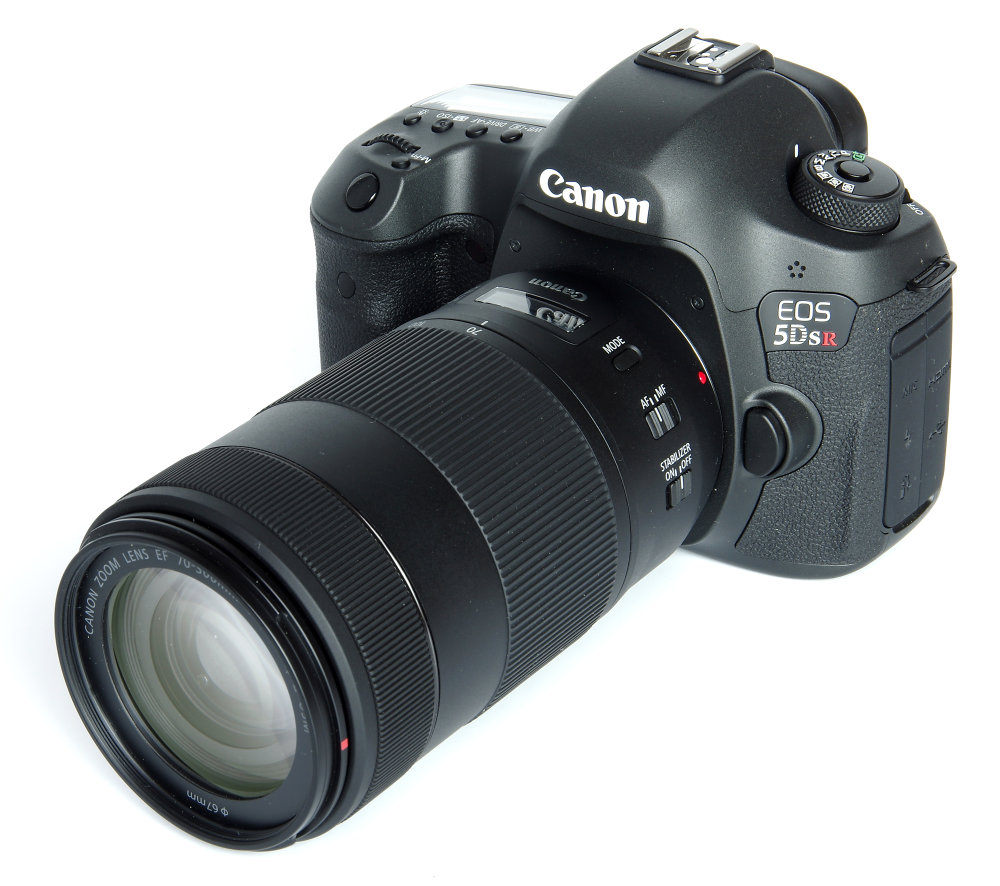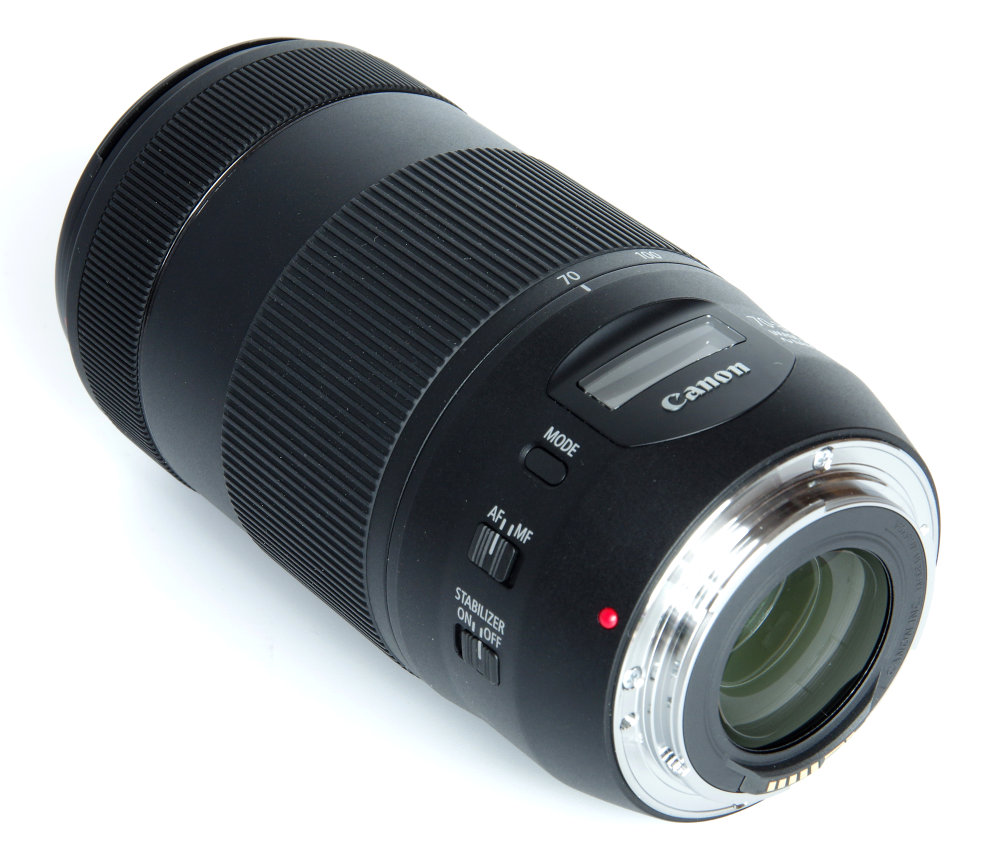Canon EF 70-300mm f/4-5.6 IS II USM Review
Canon EF 70-300mm f/4-5.6 IS II USM Handling and Features
70-300mm is a very useful telephoto range, versatile, fairly compact and offering an excellent balance between performance and cost. The step up to 400mm would add a fair amount of cost as well as increasing the size of a lens significantly. The Canon 70-300mm f/4-5.6 IS II USM lens is not the smallest such optic, but balances well on the Canon EOS 5DS R camera body and weighs in at a reasonable 710g.
Starting at the front element, we have a 67mm filter thread, surrounded by a bayonet fit for the ET-74B lens hood that is not provided as standard but has to be bought as an additional accessory. It could be argued that most marques provide the dedicated hood with such lenses, and really Canon should do the same. As a separate item, the hood costs an eye-watering £79.99. Most users will no doubt look to third party hoods that can cost considerably less.
Immediately behind this, the manual focus ring is electronic in operation. It also allows for manual tweaks to the focusing position when using the AF system. AF uses a nano USM motor, which is fast, silent and utterly efficient in locking onto the focus point.
The zoom ring is wide, well ribbed and clearly marked with a range of focal lengths. This can be used in the usual way, but the barrel can also be pushed and pulled at the front to change the focal length. There seems to be no major advantage to doing so, although it is just possible that it might assist in video making to make a smoother zoom action.
Closest to the lens mount, we have a series of switches. On the right, there is a lock switch and this can be used to secure the lens at 70mm, to prevent it extending whilst being carried. On the left, we have the Stabiliser on/off, the AF/MF and a mode switch.
The mode switch selects the display on the electronic panel. An electronic display of the focusing distance is quite useful as there is no indication on the lens barrel itself. Also on this display is a depth of field indicator that changes as the lens is zoomed. This latter function is not very useful as only f/8 and f/22 appear and the scale is just too small. The second option is a display of focal length set, but again it is of doubtful relevance as the figures are etched very clearly on the lens barrel, right next to the display. Finally, an indicator can show the amount of shake in two directions, but as we are looking either through the viewfinder or at the back screen, having such a display does not really help at all. If the display were not there, the lens would be no less useful and no less easy to operate.
The optical construction consists of 17 elements in 12 groups. There is one UD (Ultra-Low Dispersion) glass element. Focusing is down to 1.2m, giving a maximum magnification at 300mm of 0.25x, or 1:4. The diaphragm consists of 9 rounded blades in a bid to improve bokeh, the quality of the out of focus areas in an image.
Handling of the lens is superb, all the controls working smoothly and everything is ergonomically well designed. Finish is also superb and the overall feel gives a high degree of confidence.
Add your message
Please login here or if you've not registered, you can register here. Registering is safe, quick and free.
photodo Stats
428 MTF tests
74 in-depth photodo reviews
100+ users join each day
Help the lens community by reviewing or rating a lens today via our lens search
Latest Lens Reviews
- Chinon 28mm f/2.8 Vintage Lens Review
- Canon EF 70-200mm f/4L IS II USM Lens Review
- Samyang AF 85mm f/1.4 EF Review
- Sigma 70mm f/2.8 DG Macro Art Review
- Samyang AF 24mm f/2.8 FE Review
- Meike 50mm f/1.7 Review
- Tamron 70-210mm f/4 Di VC USD Review
- Lensbaby Burnside 35mm f/2.8 Review
- Asahi Super Takumar 50mm f/1.4 Review
- Asahi Super-Multi-Coated Takumar 135mm f/3.5 Review


